Tracko: Ad-hoc Mobile 3D Tracking Using Bluetooth Low Energy and Inaudible Signals for Cross-Device Interaction
Haojian Jin, Christian Holz and Kasper Hornbæk. UIST 2015.
Yahoo Labs, Sunnyvale, CA.
Video
Figure 1

Tracko provides mobile devices with a spatial awareness of surrounding devices in 3D, allowing users to interact across devices in the very space they act in. Tracko readily runs on commodity devices with no added components and requires no calibration or external infrastructure. (a) Here, Tracko enables file sharing across devices simply by swiping items towards the recipient. (b) Tracko detects the presence of other devices using Bluetooth low energy, (c) determines their distance and 3D direction from the difference in arrival times of exchanged inaudible stereo signals, and detects quick interactions using inertial sensors.
Abstract
While current mobile devices detect the presence of surrounding devices, they lack a truly spatial awareness to bring them into the user's natural 3D space. We present Tracko, a 3D tracking system between two or more commodity devices without added components or device synchronization. Tracko achieves this by fusing three signal types. 1) Tracko infers the presence of and rough distance to other devices from the strength of Bluetooth low energy signals. 2) Tracko exchanges a series of inaudible stereo sounds and derives a set of accurate distances between devices from the difference in their arrival times. A Kalman filter integrates both signal cues to place collocated devices in a shared 3D space, combining the robustness of Bluetooth with the accuracy of audio signals for relative 3D tracking. 3) Tracko incorporates inertial sensors to refine 3D estimates and support quick interactions. Tracko robustly tracks devices in 3D with a mean error of 6.5 cm within 0.5 m and a 15.3 cm error within 1 m, which validates Tracko’s suitability for cross-device interactions.
Publication
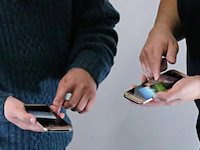
Other figures
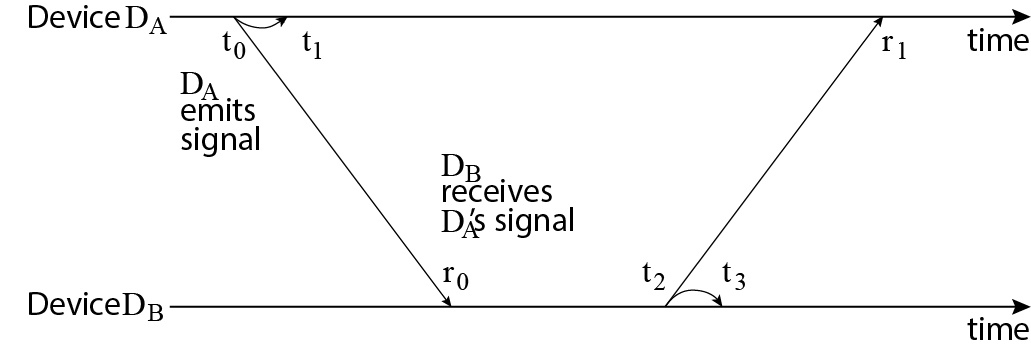
Acoustic ranging between two devices. Device DA emits a signal at t0 and records it at t1. Device DB receives this signal at r0. t2, t3, r1 indicate the corresponding time stamps when Device B emits an acoustic signal in response.
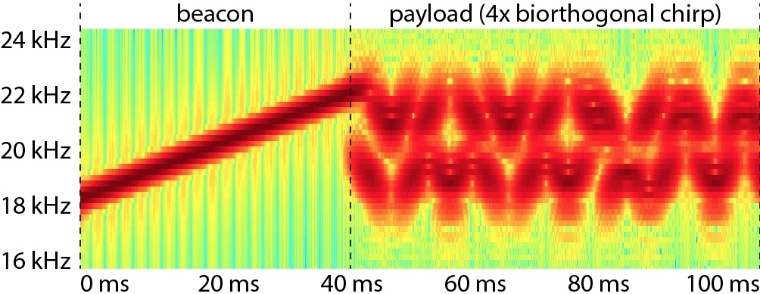
Tracko’s inaudible signals comprise an initial beacon and a payload that encodes sender ID, speaker ID, and a counter using biorthogonal chirps for stable audio decoding.

Biorthogonal chirps encode 2 bits as a series of 4 up or down chirps, such that each is orthogonal to each other.
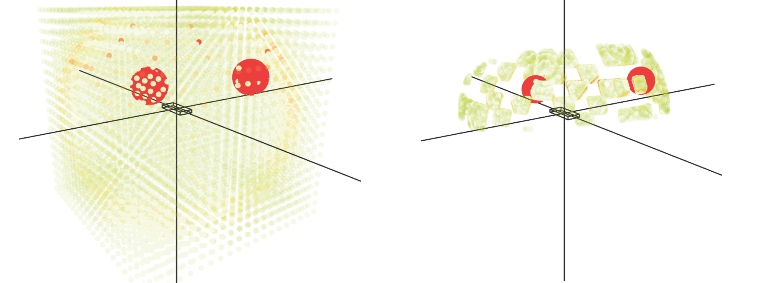
Visualization of the results produced by Tracko's residual model. (left) The residual distribution over the whole 3D space. (right) The 1000-point cloud with smallest residuals. The two solutions with lowest residuals are highlighted in red.

Distance errors for Tracko’s predictions of roundtrip distances. Bars present the percentage of error distribution.

Accuracy of the 3D coordinate estimates calculated by our residual model for the remote device in 3D space.
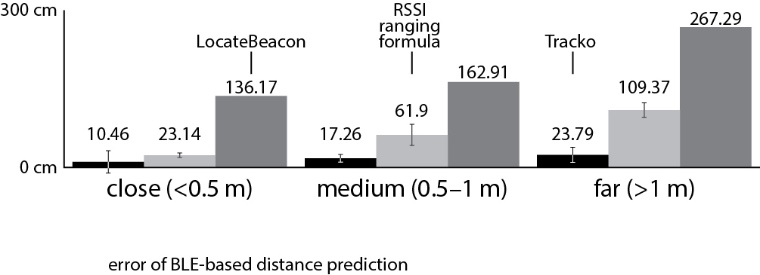
Errors of BLE-based distance estimations. Tracko’s on-the-fly calibration yields more accurate distances than existing apps or the typical RSSI-to-distance mapping.
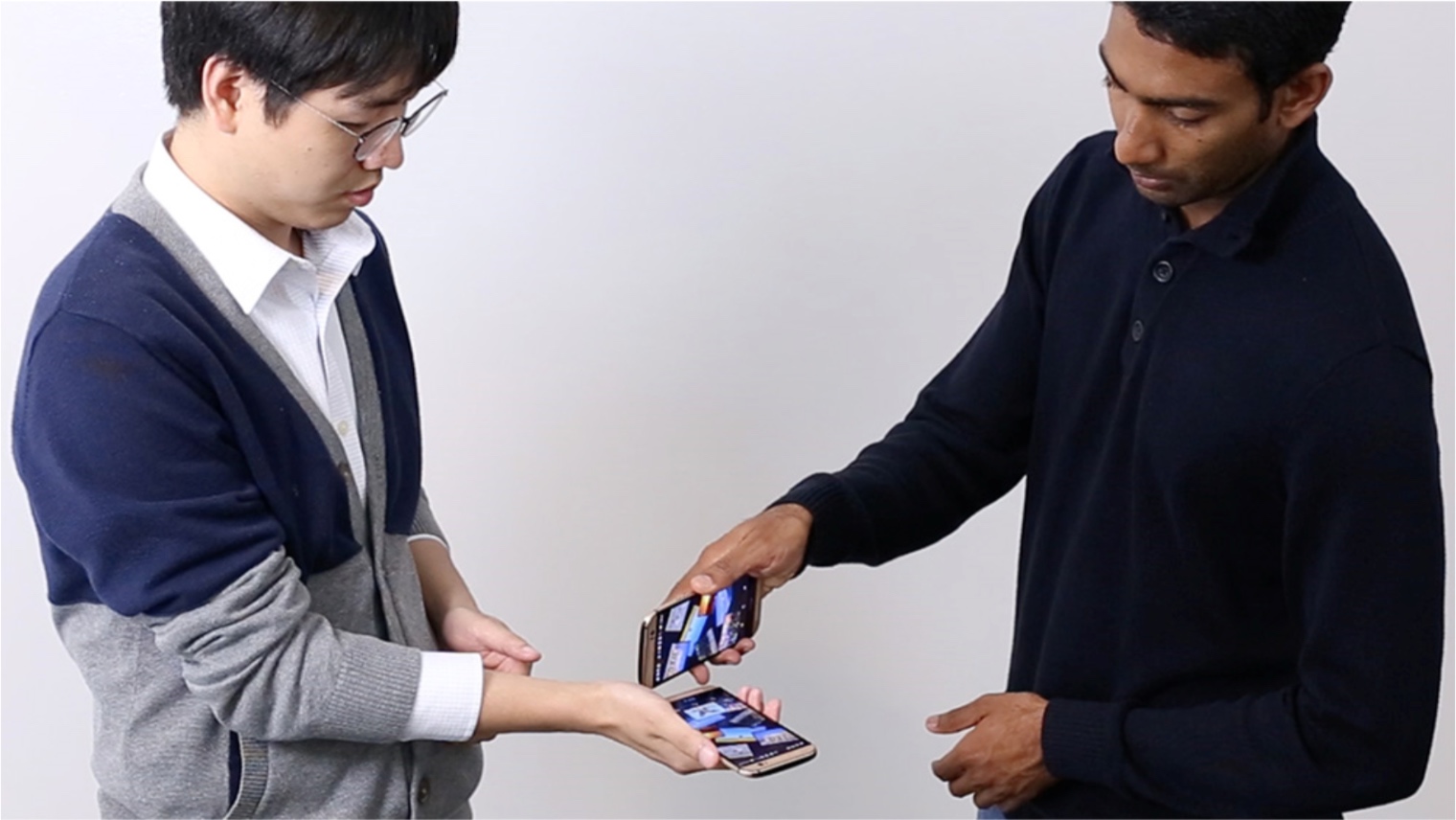
Tracko enables devices to support new interaction techniques, here pouring objects from one device into another.